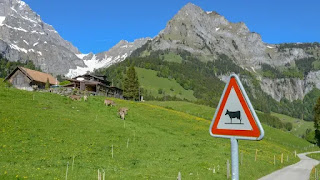Traveling by train from Paris to Toulouse on the SNCF (Société Nationale des Chemins de fer Français) is a delightful experience that offers both comfort and a scenic view of the French countryside. The journey begins at the bustling Gare Montparnasse in Paris, one of the city's major train stations.
Departure from Paris
As the train departs from Gare Montparnasse, you settle into your comfortable seat, enjoying the spacious legroom and the amenities provided. The train picks up speed, smoothly gliding out of the urban sprawl of Paris and into the picturesque French countryside.
Shortly after leaving Paris, the scenery transforms into rolling fields and quaint villages. The first stretch of the journey takes you through the Île-de-France region, characterized by its expansive farmland and serene landscape. You might catch sight of small, charming towns with their traditional French houses and church steeples peeking through the trees.
First Stop: Tours
The train's first major stop is in the city of Tours, located in the heart of the Loire Valley. This region is famous for its historic châteaux and lush vineyards. Even if you don’t disembark, the brief stop allows you a glimpse of this beautiful area known for its architectural heritage and winemaking.
Journey through the Loire Valley
As the train continues southward, it passes through the Loire Valley, often referred to as the "Garden of France." You can see the verdant landscape dotted with vineyards, orchards, and the occasional chateau standing majestically amidst the greenery. This region's natural beauty is enhanced by the gentle meandering of the Loire River.
Second Stop: Poitiers
Next, the train stops at Poitiers, a city known for its Romanesque architecture and historical significance. The train station here is modern, contrasting with the old-world charm of the city’s medieval buildings and the famous Poitiers Cathedral.
Entering Nouvelle-Aquitaine
As the journey progresses, the train enters the Nouvelle-Aquitaine region. The landscape gradually changes, becoming more hilly and forested. This area is known for its diverse terrain, including forests, rivers, and rolling hills.
Third Stop: Angoulême
The train then makes a stop in Angoulême, a city perched on a plateau overlooking the Charente River. Angoulême is renowned for its International Comics Festival and well-preserved old town. The train station here offers a quick view of the city’s historic architecture and vibrant street art.
Southwestern France
Continuing south, the train passes through more of southwestern France, an area characterized by its rich cultural heritage and varied landscapes. You might see vast sunflower fields, peaceful rivers, and small traditional farms. The colors of the countryside, with their lush greens and golden yellows, are especially striking.
Final Stop: Toulouse
Finally, the train arrives in Toulouse, also known as "La Ville Rose" (The Pink City) due to its distinctive terracotta brick buildings. The Toulouse-Matabiau station is centrally located, making it easy to access the city's many attractions. As you disembark, you’re greeted by the warm, sunny climate typical of this region.
The train journey from Paris to Toulouse on the SNCF offers more than just a means of transportation. It's a window into the heart of France, showcasing the country's diverse landscapes and rich cultural heritage. From the historic towns and lush vineyards of the Loire Valley to the rolling hills and charming cities of southwestern France, each moment on the train is an opportunity to appreciate the beauty and history that make France such a unique and wonderful destination.



























Comments
Post a Comment